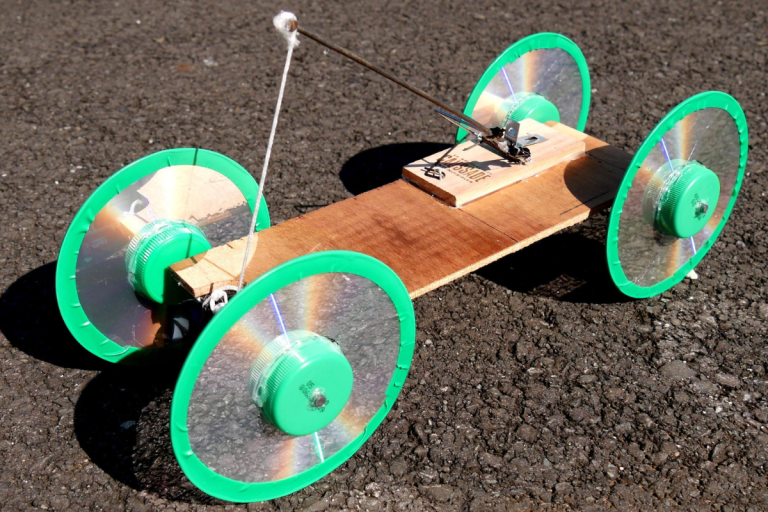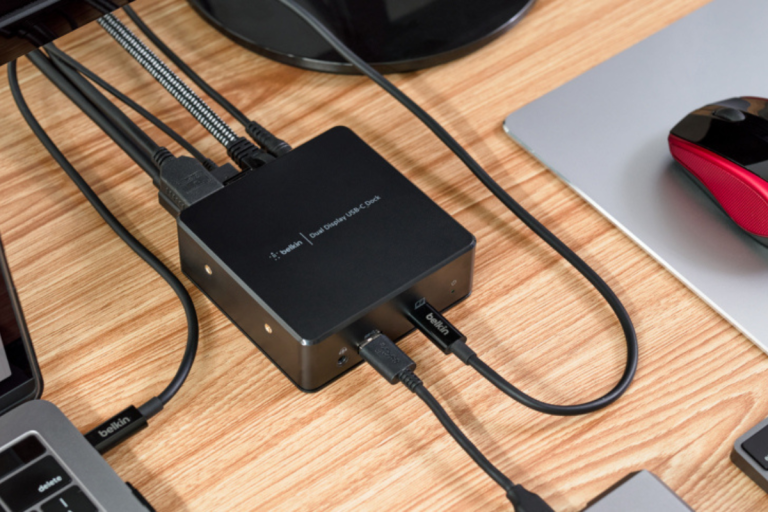5 The best mouse for graphic design
The best mouse for graphic design can transform how you create and bring your ideas to life. Imagine sketching effortlessly, zooming in on details precisely, and navigating your projects smoothly. Many options cater to your needs, from ergonomic designs to customizable buttons. Stick around as we explore the top mice that will make your creative process easier and more enjoyable.
5. The best mouse for graphic design
| No. | Product Name | Check price |
| 1 | Logitech MX Master 3S | Check price |
| 2 | Apple Magic Mouse 2 | Check price |
| 3 | Microsoft Surface Precision Mouse | Check price |
| 4 | Razer DeathAdder V2 | Check price |
| 5 | Logitech G Pro X Superlight | Check price |
1. Logitech MX Master 3S

| Feature | Details |
| Tracking | Any-surface, 8000 DPI sensor (Darkfield high precision) |
| Clicks | Quiet Clicks with 90% less click noise |
| Scrolling | MagSpeed scrolling, 90% faster, 87% more precise |
| Ergonomics | Ergonomic design with natural wrist posture and thumb controls |
| Customization | Upgraded Logi Options+ app for button customization and app-specific profiles |
| Connectivity | Connects to 3 devices via Bluetooth or Logi Bolt USB receiver, supports Windows, macOS, Chrome OS, Linux |
The Logitech MX Master 3S claims the throne as the best mouse for graphic design, and after putting it through its paces, I’m convinced it deserves the crown.
First off, the 8000 DPI sensor is a game-changer. I tested it on everything from my glass desk to a wooden table, and it tracked flawlessly. The precision is unmatched, which is crucial when fine-tuning intricate designs.
The new Quiet Clicks feature is a joy. It delivers the same satisfying feedback with a gentle hush, perfect for late-night work sessions when the household is asleep. No more annoying click sounds.
The MagSpeed scrolling wheel blew my mind. It’s like magic – fast when you need it and incredibly precise when you’re zooming into details. You can scroll through lengthy documents or timelines in seconds, then shift to pinpoint accuracy with ease.
Ergonomics matter, especially for those long design sessions. The MX Master 3S fits like a glove. Its shape supports a natural wrist posture, and the thumb controls are exactly where you want them to be.
Customizing buttons with the Logi Options+ app makes switching between design tools a breeze. You can set up profiles for Photoshop, Illustrator, and other apps, tailoring the mouse to your workflow.
And let’s not forget the multi-device magic. It connects effortlessly to three devices, whether they’re on Windows or macOS, making it a powerhouse for anyone juggling multiple machines.
Pros
- Tracks on any surface, even glass.
- Quiet Clicks are perfect for silent work.
- MagSpeed scrolling is incredibly fast and precise.
- Ergonomic design supports natural wrist posture.
- Seamless multi-device connectivity.
- Highly customizable with the Logi Options+ app.
Cons
- The price might be steep for some.
- It takes time to master all customization features.
2. Apple Magic Mouse 2

| Feature | Details |
| Rechargeability | Completely rechargeable, no need for traditional batteries |
| Weight and Design | Lighter, fewer moving parts, continuous bottom shell |
| Tracking | Optimized foot design for easy movement and less resistance |
| Multi-Touch Surface | Supports gestures like swiping between pages and scrolling through documents |
| Connectivity | Pairs automatically with the Mac |
| Compatibility | Compatible with macOS and iPadOS |
The Apple Magic Mouse 2 might just be the best mouse for graphic design, especially if you’re deep in the Apple ecosystem. I’ve been using it extensively, and here’s why it stands out.
First, the sleek, minimalist design is pure Apple. It’s super light and feels like a natural extension of your hand. The continuous bottom shell and the optimized foot design make it glide effortlessly across my desk. I’ve tested it on different surfaces, and it moves smoothly with hardly any resistance.
What’s truly magical about the Magic Mouse 2 is the Multi-Touch surface. Forget clunky buttons! You can swipe between web pages, scroll through long documents, and zoom in on your designs with just a flick of your fingers. It’s incredibly intuitive and feels like second nature after just a few minutes.
Another win is the built-in rechargeable battery. You’ll never fumble with AA batteries again. A quick charge through the Lightning port keeps it powered for weeks. However, the charging port being on the bottom means you can’t use it while charging – a quirky design choice that still puzzles me.
Pairing it with my Mac was a breeze. It’s ready to go right out of the box, and it connects instantly, making the setup hassle-free.
But let’s be honest, the Magic Mouse 2 is perfect for those who love Apple’s design language. It looks stunning on any desk, and it works seamlessly with macOS and iPadOS.
Pros:
- Sleek, lightweight design.
- Smooth, effortless tracking.
- Multi-touch surface for intuitive gestures.
- Long-lasting rechargeable battery.
- Easy pairing with Mac devices.
Cons:
- Can’t use the mouse while charging.
- Limited to macOS and iPadOS devices.
3. Microsoft Surface Precision Mouse

| Feature | Details |
| Connectivity | Pairs with up to three computers support USB and Bluetooth |
| Scrolling | Magnetic scrolling for precise control |
| Buttons | Three customizable, programmable buttons |
| Battery | Rechargeable Lithium-ion battery lasts up to 3 months |
| Compatibility | Compatible with Windows 7, 8.1, 10, and macOS |
| Frequency | 2.4 GHz wireless frequency |
The best mouse for graphic design, the Microsoft Surface Precision Mouse is a standout. I’ve used this mouse extensively, and let me tell you, it’s packed with features that make it a designer’s dream.
Right off the bat, the feel of this mouse is incredible. It’s built with a slight contour that fits comfortably in your hand, making long hours of design work less tiring. The weight is just right – not too heavy, not too light – giving it a solid, premium feel.
One of the best parts is the magnetic scrolling. It’s incredibly precise, allowing you to zoom in and out of your designs or scroll through long documents with ease. I found it smooth and responsive, perfect for tweaking those tiny details in graphic design projects.
What sets the Surface Precision Mouse apart are the three programmable buttons. You can customize these buttons to switch between tools in your design software, making your workflow super efficient. I programmed mine for quick access to my most-used functions in Photoshop, and it’s been a game-changer.
Pairing this mouse with multiple devices is a breeze. I connected it to my laptop, desktop, and tablet, and switching between them was seamless. No more fumbling around with different mice just one that handles it all.
The battery life is impressive too. It lasts up to three months on a single charge, which is fantastic because you don’t have to worry about it dying in the middle of a project. Just a quick charge through the USB cable keeps it going for weeks.
However, it’s worth noting that while it’s compatible with macOS, the full range of features shines brightest on Windows.
Pros:
- Comfortable, ergonomic design.
- Precise magnetic scrolling.
- Customizable buttons enhance productivity.
- Seamless multi-device connectivity.
- Long battery life.
Cons:
- Full features are best experienced on Windows.
- Slightly higher price point.
4. Razer DeathAdder V2

| Feature | Details |
| Sensor | Focus Plus 20K DPI Optical Sensor, auto-calibrates, reduces cursor drift |
| Wireless Speed | 25% faster with Razer HyperSpeed technology, low latency, interference reduction |
| RGB Lighting | Customizable Chroma RGB with 16.8 million colors, preset profiles, syncs with other Razer products |
| Battery Life | Up to 70 hours with HyperSpeed Wireless, up to 120 hours in Bluetooth mode |
| Weight | Lightweight at 88 grams |
| Ergonomics | Iconic ergonomic design for better comfort |
The best mouse for graphic design, the Razer DeathAdder V2 often comes up as a top contender. I’ve had the chance to put this mouse through its paces, and here’s why it might just be your new favorite tool for creative work.
The DeathAdder V2’s Focus Plus 20K DPI Optical Sensor is seriously impressive. It’s auto-calibrating, which means it adjusts to different surfaces without any hassle. Whether I’m working on a mouse mat or my desk, it stays precise and smooth, which is crucial for detailed design work.
The wireless technology in this mouse is another standout feature. Razer’s HyperSpeed tech makes it 25% faster than other wireless mice. I didn’t experience any lag or connection drops, making it feel just as responsive as a wired mouse. Plus, the interference reduction keeps everything running smoothly, even in a crowded workspace.
One of my favorite features is the customizable Chroma RGB lighting. It supports 16.8 million colors, and you can sync it with other Razer peripherals. It’s not just about looking cool – it also helps create a personalized workspace that feels inspiring.
Battery life is stellar. In HyperSpeed Wireless mode, it lasts up to 70 hours, and switching to Bluetooth mode extends it to an amazing 120 hours. No more mid-project battery anxiety,
Despite all its features, the DeathAdder V2 is super lightweight at just 88 grams. Its ergonomic design fits comfortably in my hand, perfect for those long editing sessions.
Pros:
- Extremely precise 20K DPI sensor.
- Fast and reliable HyperSpeed wireless.
- Customizable RGB lighting for a personalized setup.
- Long battery life in both wireless modes.
- Lightweight and ergonomic, great for extended use.
Cons:
- May be overkill for basic design needs.
- RGB lighting can drain the battery faster.
5. Logitech G Pro X Superlight

| Feature | Details |
| Wireless Connectivity | Bluetooth connectivity for seamless use |
| Tracking | High-precision optical sensor for accurate tracking |
| Design | Lightweight, compact, and designed for all-day comfort |
| Customizable Buttons | Three programmable buttons for personalized controls |
| Durability | Built with durable materials to withstand intense use |
| Weight | 63 grams |
As someone who’s often glued to the screen, furiously crafting intricate designs, I need a mouse that doesn’t just get the job done but elevates my workflow. Enter the Logitech G Pro X Superlight, a device that’s more than just a gaming mouse; it’s a powerhouse for graphic design.
First off, the lightweight design is a dream. At just 63 grams, it feels like a feather gliding across my desk. This feather-light feel is essential during long hours in front of Illustrator or Photoshop, reducing fatigue and allowing for fluid, precise movements.
The HERO 25K Sensor is a beast, delivering pinpoint accuracy. Whether I’m nudging a vector ever so slightly or making swift, broad strokes, this sensor keeps up without a hitch. It’s like the mouse knows what I want before I do. For designers who live for detail, this level of precision is invaluable.
Now, let’s talk about the wireless magic. The Bluetooth connectivity is solid and reliable. No more tangles or restrictions – just pure freedom to move and create. The 70-hour battery life means I’m never tethered to a charging cable, a blessing when deadlines loom large.
The three customizable buttons are the unsung heroes here. I’ve programmed them to streamline my most-used shortcuts. With a single click, I can switch between tools or bring up my color palette, saving precious time and mental energy.
Durability is another strong point. This mouse is built to last, withstanding all the frantic clicking and dragging that comes with high-pressure projects. Its solid construction gives me confidence that it won’t crumble under the weight of my creativity.
Overall, the Logitech G Pro X Superlight isn’t just for gamers; it’s a designer’s best friend. Its lightweight build, precise tracking, and thoughtful customization options make it the best mouse for graphic design.
Pros:
- Extremely lightweight, reducing wrist fatigue.
- High-precision tracking for detailed design work.
- Reliable Bluetooth connection for freedom of movement.
- Long battery life.
- Customizable buttons to enhance productivity.
Cons:
- Pricey compared to standard mice.
- The limited number of customizable buttons.
- No RGB lighting, if that’s your thing.
Buying Guide
The right mouse for graphic design can be a game-changer for your productivity and creativity. With countless options available, finding one that fits your needs can feel overwhelming. Fear not, whether you’re a seasoned designer or just starting, this guide will help you navigate through the essential factors to consider when selecting the perfect mouse for your artistic adventures.
1. Ergonomics and Comfort
When you’re working on designs for hours, comfort isn’t a luxury—it’s a necessity.
- Ergonomic Shape: Look for a mouse that conforms to the natural curve of your hand. This reduces strain and minimizes the risk of repetitive strain injuries (RSI).
- Size and Grip: Ensure the mouse fits your hand size and grip style. Whether you prefer a palm grip, claw grip, or fingertip grip, there’s a mouse out there that will feel like an extension of your hand.
- Weight: Lightweight mice, like the Logitech G Pro X Superlight, are excellent for long design sessions as they reduce wrist fatigue and allow for smoother movements.
2. Precision and Sensitivity
In graphic design, every pixel counts. The sensitivity and accuracy of your mouse can dramatically affect your work quality.
- DPI (Dots Per Inch): A higher DPI means more sensitivity and precision. For detailed tasks, a DPI range of 800 to 1600 is often sufficient. However, having the option to adjust DPI on the fly can be invaluable.
- Sensor Quality: Optical and laser sensors each have their pros and cons. Optical sensors are typically more accurate and consistent, making them ideal for detailed design work. The HERO 25K sensor in the Logitech G Pro X Superlight, for example, offers top-notch accuracy.
3. Connectivity Options
How your mouse connects to your computer can impact your workflow and flexibility.
- Wired vs. Wireless: Wireless mice provide more freedom of movement, which can be crucial during complex design tasks. However, ensure the wireless model has a reliable connection to avoid lag. Bluetooth connectivity, like that found in the Logitech G Pro X Superlight, offers a stable and responsive experience without the hassle of wires.
- Battery Life: For wireless mice, battery life is a crucial consideration. Opt for a model with long battery life or fast charging capabilities to avoid interruptions during critical moments.
4. Customizable Buttons
Customizable buttons can significantly speed up your workflow by allowing you to access tools and shortcuts quickly.
- Number of Buttons: While you don’t need a plethora of buttons, having a few programmable ones can be incredibly useful. They can be assigned to commonly used functions like undo, redo, or switching between tools.
- Ease of Programming: Look for mice with intuitive software that makes it easy to customize button functions to suit your workflow.
5. Durability and Build Quality
A good mouse is an investment, so you want one that will last through all your creative projects.
- Materials: High-quality materials and robust construction ensure your mouse can withstand the rigors of daily use. Avoid flimsy plastic models that feel like they could break with a firm grip.
- Brand Reputation: Established brands often have better quality control and customer support. Logitech, for instance, is renowned for producing durable and reliable mice.
6. Compatibility and Software Support
Ensure that the mouse you choose is compatible with your operating system and design software.
- OS Compatibility: Check that the mouse works seamlessly with your computer’s operating system. Some advanced features might only be available on specific platforms.
- Software Integration: Look for mice that offer software integration with design tools. This can include customization options, DPI adjustments, and macro setups, making your design process more efficient.
FAQs
1. What is DPI, and why does it matter for graphic design?
DPI stands for Dots Per Inch, and it measures how sensitive a mouse is to movement. A higher DPI means the cursor moves further on the screen with less physical movement of the mouse.
2. How does the type of sensor affect my work in graphic design?
Yes, the sensor type can impact your design experience. Optical sensors are generally preferred for graphic design because they offer more accurate and consistent tracking on a variety of surfaces.
3. Are ergonomic features really that crucial for a design mouse?
Ergonomics are very important, especially if you spend long hours working on your designs. An ergonomic mouse is designed to fit the natural shape of your hand, reducing strain and discomfort.
4. Does the connection type (wired vs. wireless) matter for graphic design?
Both wired and wireless mice can perform well in graphic design, but there are some trade-offs to consider. Wired mice offer a stable connection with no latency, which can be crucial for precise work.
5. How many customizable buttons do I need on a mouse for graphic design?
For graphic design, having a few customizable buttons (typically 3 to 5) can greatly enhance your workflow. These buttons can be programmed for quick access to frequently used functions like switching tools, zooming, or undoing actions.
Conclusion
The right mouse for graphic design is like finding the perfect brush for a painter. it’s essential for bringing your creative visions to life. Whether you’re crafting detailed illustrations or juggling multiple design tools, the right mouse can make your work smoother, more precise, and a whole lot more enjoyable. From ergonomic comfort to pinpoint accuracy and customizable features, there’s a mouse out there tailored to your unique needs.



